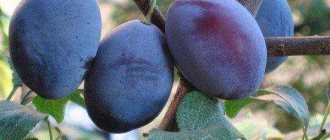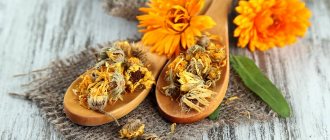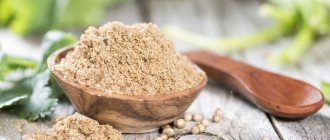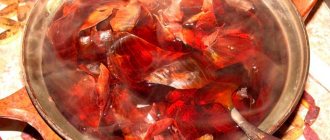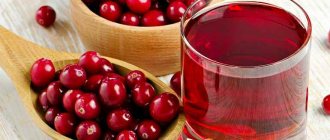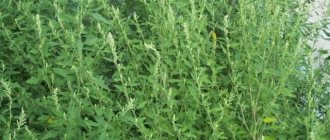Fir-based recipes have been used since ancient times for youth, beauty and health. Needles, resin, bark and fir oil help cope with inflammation in the body. Fir is rich in essential oils and tannins, as well as vitamins. Its drugs are used to improve the appearance and health of skin and hair, reduce the symptoms of ARVI, and as a remedy for pain in muscles and joints. The oil of this plant is used not only for health, but also for furniture. The beneficial properties of fir are known very widely throughout the world.
What kind of plant is this
Fir is an evergreen coniferous tree with soft, dense needles. Fir leaves are not as hard as those of pine or even spruce. They are flat and very soft.
Externally, fir is similar to spruce, only much taller - some trees grow above forty meters. The trunk diameter is 40-60 centimeters.
Like spruce, fir branches start from the ground itself. The tree has a pyramidal shape.
The root system of fir is quite developed and consists of one main root, which goes deep into the ground for several meters, and several additional roots near the surface of the earth. This arrangement of the root system makes the tree incredibly resistant to weather conditions.
The bark of the tree is thin and smooth, has small thickenings in which fir resin or resin is produced. Moreover, fir is the only coniferous tree that does not have resin and resin passages inside its trunk. Resin is produced exclusively in the bark.
Fir cones, like the leaves, are slightly different from the cones of other coniferous trees. Firstly, their location on top of the branches is slightly different from the location of pine or spruce cones. And also the cones that ripen do not just fall off, but partially. The stem of the pine cone remains on the branch while the seeds fall to the ground.
Fir seeds have wings so that they can be carried far by the wind. Fir also has the ability to reproduce using shoots in a vegetative manner.
This is a very dry tree, so it is better not to light a fire near fir trees.
Types of fir
There are several types of fir that differ in appearance, size and some properties. The main ones are the following:
- Balsam has short needles, half-bent and as if “protruding” upward. A clear “parting” is visible on the branches in the needles. The trees have a height of 7 to 15 meters, depending on the variety, location and environmental conditions.
- European is a relatively short tree with short soft needles, reaching a height of 2 meters after a couple of years of growth. The maximum height is about 10 meters. The beneficial properties of fir needles of this type make it possible to use it in the manufacture of pharmaceutical preparations.
- Noble is a tree that grows very tall in natural conditions, but grows in bushes in a cultivated environment. It is distinguished by thick comb-like needles with a bluish tint and large cylindrical cones. Some varieties of noble fir have distinct blue needles.
- Vicha fir reaches 40 meters in height. It grows slowly, has oblique, comb-like, short needles and resinous purple buds.
- Koreana is a relatively tall coniferous tree, the height of which can reach more than 20 meters in the wild. It also grows slowly. It is characterized by short, rounded needles and small buds, almost not impregnated with resin. It has many subspecies and varieties.
- The Caucasian is very tall. Some trees grow above fifty meters. Fir is characterized by very dark green needles that quickly fall from the branches, leaving them half naked.
- Monochromatic - a tree with bluish-green needles. The leaves are curved upward, like umbrellas, quite long and thick. Some varieties are blue or yellow-green in color. The beneficial properties of fir needles of this type are also taken into account in the manufacture of certain medications.
- Whitebark is a plant with light bark and dark green shiny needles. In the wild it reaches about twenty meters in height. It grows most often in temperate or subtropical climates. It can be found in the Far East, China or South Korea.
- Sakhalinskaya is a tall tree with thick but not long needles. The leaves are round, soft, dark green.
- The beneficial properties of Siberian fir are known far beyond the borders of Siberia. This is a very tall tree with soft coniferous leaves and small resinous buds. The bark, buds and leaves of this tree species are very fragrant. Contains a lot of essential oil.
- Alpine is a long and narrow tree, reaching more than fifty meters in height. It has very light bark and bluish-green comb-like needles.
- Black - a tree with very dark bark and light yellow-green needles. It contains a lot of oils and tannins, so it is fragrant. The beneficial properties of fir branches are widely known. Contraindications for using branches in bath brooms are the same as for visiting a bathhouse.
Treatment recipes
When performing healing procedures approved by a doctor, at home they use proven folk recipes based on fir bark, focused on a specific disease.
For the kidneys
You will need crushed dried raw materials - 1 tbsp. l. Steam it with a glass of heated water, and then boil at low temperature for 5-8 minutes. Leave for an hour under a warm scarf and filter.
Pour in boiled water to obtain the initial volume of the healing decoction. Drink before meals, maintaining an interval of 25-30 minutes, a quarter glass four times a day.
The remedy also helps with pulmonary diseases. Used to treat prostate adenoma.
From pressure
To alleviate the condition of hypertension developing at stage I or II, you should put 300 g of crushed fir bark in an enamel pan with 2 liters of water. Place the dishes on the fire. After boiling, simmer the mixture over low heat for 30 minutes.
Article for you:
Medicinal properties of rowan bark and use in folk medicine
After straining the cooled broth, take 100 ml every 8 hours. After 10 days of treatment, it is necessary to take a break of the same duration. The general course, depending on how you feel, is two months.
For prostatitis
To make the most effective remedy at home that can help with problems caused by the development of prostatitis, you will need crushed fir bark - 300 g.
It is poured into a darkened bottle with 500 ml of vodka. Infuse in a dark place for 14 days with daily shaking of the container. Filtered tincture 2 tbsp. l. Take one hour after meals.
Against cough
Fir oil, which is obtained not only from pine needles, but also from tree bark, effectively relieves coughs, even prolonged and severe ones. Various variations of the use of this unique substance are practiced.
- Add a few drops of oil to boiling water and breathe for five minutes, covered with a blanket. Then you need to lie under the covers for about thirty minutes. Repeat morning and evening.
- Combine a glass of citrus juice at room temperature with honey - 1 tsp. and fir oil - 6 ml. Drink before breakfast, lunch, dinner.
- For a severe cough, it is recommended to add 2 drops of fir extract to vegetable oil - 1/2 tsp. and place the mixture on the root of the tongue.
For arthrosis
To reduce pain and relieve inflammation, it is useful to rub joints affected by arthrosis with slightly warmed fir oil with light massaging movements.
Repeat up to three times a day. It is recommended to continue the course until the pain decreases.
For pyelonephritis
A liter jar is filled with small fragments of fir bark to 1/3 of the volume and hot water is poured in. Keep the dishes in a water bath for an hour and then filter the broth.
It is necessary to consume the healing liquid 25-35 minutes before breakfast, lunch, dinner, a quarter glass.
For migraine
The dried bark of medicinal fir should be crushed and measured 2 tbsp. l. Pour the raw materials into an enamel bowl and brew with boiling water - 500 ml. Place in a water bath for 40 minutes for proper heating.
Article for you:
Medicinal properties of larch bark and its use in folk medicine
The cooled aromatic drink should be drunk 120 ml, keeping an interval of half an hour before meals four times a day. On average, the recommended course is three weeks.
Where does fir grow?
Fir is a hardy tree that tolerates frost, cold, heat, bright sun and shade. Many species are demanding of air humidity, but too much soil moisture has a detrimental effect on the tree. It grows well in the wild and does not take root well in big cities.
Firs are most often found in North America, as well as in Russia, Western Siberia, China and Korea.
There are species that grow on the Pacific islands closer to Australia, as well as on the shores of the Mediterranean Sea in Greece, Croatia, Albania and even Italy.
Useful properties of fir
Fir is very often used for medicinal purposes: resin, cones, pine needles, bark and branches.
Fir branches are rich in vitamin C, and needles have an amazing ability to remove harmful substances from the body: heavy metals and salts. Also, flavonoids in pine needles have bactericidal beneficial properties.
Indications for the use of fir are diseases of the upper respiratory tract, decoctions and inhalations help well with acute respiratory viral infections, colds, and bronchitis. Also, decoctions and infusions of branches and pine needles are used as an immunostimulant. But there are some contraindications.
The beneficial properties of fir needles are also important for the prevention of cardiovascular diseases. Fir oil and infusion of cones are used to treat joint pain, especially in old age.
Fir needles have beneficial properties. Inhalation recipes are often beneficial not only for breathing, but also calm the nervous system.
Contraindications
- Pregnancy and lactation;
- Epilepsy;
- Tendency to seizures;
- Ulcerative lesions of the digestive tract;
- Hypersensitivity to the plant.
It is not recommended to use plant preparations for young children. It is prohibited to combine the use of fir oil and alcohol consumption.
Since the oil tends to accumulate in the body, it should be taken in low doses - no more than 5-10 drops per day (depending on tolerance). When used externally, the dose per day should not exceed 8-10 g. It should be borne in mind that the oil has a laxative effect. Before using plant preparations, it is advisable to consult a specialist.
Medicinal forms of the plant
In medicine, fir oil is mainly used, which is a transparent, colorless or light yellow liquid with a characteristic resinous odor. The oil is contained in fir paws and young branches, which serve as the main healing raw materials. Camphor, which is used for heart failure, is extracted from the oil. Fir also has beneficial properties for joints and muscles, as well as for normalizing the respiratory tract.
The resin that is collected from the bark of trees is also used for medicinal purposes. It is mixed with boar or bear bile and used for stomach diseases. For healing baths and inhalations, branches are prepared that are characterized by high bactericidal activity. For example, fir branches brought into a room make the air almost sterile.
Collection
To prepare fir bark yourself, select a site remote from major highways and industrial zones. Several branches are cut from each tree, from which the surface layer is removed.
Although this raw material can be collected all year round and used fresh, it should be borne in mind that the highest concentration of healing substances is observed at the beginning of winter.
Raw materials can be dried by laying them out in a thin layer in a room with good ventilation with regular turning.
Fir for the treatment of respiratory diseases
Fir essential oil is indicated for various diseases of the upper respiratory tract, such as:
- rhinitis, sinusitis;
- tonsillitis;
- bronchitis;
- pneumonia;
- cough of various etiologies;
- ARVI.
Inhalations help reduce inflammation and swelling of the upper respiratory tract, which significantly alleviates the patient’s condition after the first use.
They also alleviate the condition of pronounced dryness of the laryngeal mucosa, which occurs as a result of chronic diseases of the nasopharynx.
Treatment of the upper respiratory tract
The following recipe will help with a sore throat. Half a teaspoon of salt should be dissolved in one hundred grams of alcohol. Grind fresh fir needles and pour about one spoon of the resulting mixture. The composition must be infused for a week in a dark and cool place, shaking every day. Then you need to strain it with gauze or a sieve. The resulting mixture is used for inhalation, adding to hot water in a ratio of one to ten.
For bronchitis and pulmonary diseases, oral use of the following composition will be effective. One tablespoon of crushed fir bark (which can be purchased at a pharmacy) should be poured into a glass of cold water and brought to a boil, then simmer for about seven minutes. The broth should be infused for an hour, and then water should be added to a volume of two hundred milliliters. The composition should be taken four times a day on an empty stomach (strictly before meals) fifty grams at a time.
Treatment of joint pain
Fir oil is rich in beneficial and healing properties. This is a very good helper for alleviating joint and muscle diseases.
The oil contains active ingredients such as:
- Camphor - has a pronounced analgesic effect, as well as a natural antiseptic.
- Bornyl acetate is an ester that gives the oil a specific pine smell. It has an anti-inflammatory and anti-edematous effect, soothing.
Fir oil is also rich in vitamins and antioxidants, which the body absorbs when applied externally directly through the pores of the skin. This helps to improve the condition of a damaged or diseased joint and restore it.
Thanks to proper use, the beneficial properties of fir and recipes will allow you to get back on your feet even with severe pain. Here are some recipes:
- Fir baths for arthrosis. Add a little decoction of fir needles to a bowl of warm water or make a solution of water and fir oil in a ratio of 10 drops of oil per liter of water and warm your feet or hands in the solution for about 15 minutes.
- You can first warm up the joints with a blue lamp, bags of salt, a heating pad, and then rub fir oil into the affected areas.
- Massage is also helpful. You need to add fir essential oil to the base oil. Do not use in pure form.
- Fill a half-liter glass bottle one third with turpentine, one third with sunflower oil with ten drops of fir oil, and another third with alcohol. You can also add a little camphor to the solution. You can rub your joints with this mixture every evening before going to bed, and then wrap them in something warm or cover them with a blanket.
Chemical composition
The medicinal raw materials of fir are needles, young branches, buds and bark.
Found in various parts of the plant:
- Roots: essential oil (about 8%), the components of which are safrole, camphor, cineole, camphorene, bisabolene, camphene, organic acids;
- Bark: tannins (up to 13%); resin (fir balsam), which includes resin (up to 70%) and essential oil (up to 30%);
- Seeds: solid fatty oils (up to 30%), containing acylglycerols of oleic, carminic and lauric acids, as well as vitamin E;
- Needles: essential oil (the basis for camphor), proteins, carbohydrates, carotene, vitamins C and E, flavonoids, phytoncides, trace elements (iron, cobalt, manganese, copper, zinc);
- Shoots and thin branches: essential oil (about 4%), consisting of 80% camphor.
The composition of the essential oil of all parts of fir includes: bornyl acetate (an ester of borneol and acetic acid), tannins, vitamin C, tocopherols, carotene, borneol, beta-pinene, alpha-pinene, camphene, dipentene, santhene, A-phellandrene, bisabolene .
Strengthening the immune system
Fir also contains substances that strengthen and improve immunity. Fir needles are especially rich in vitamins, antioxidants and other components beneficial to the body.
To improve your immune system, you can make the following cocktail: pour about five tablespoons of fresh pine needles into two glasses of hot water overnight, and in the morning, strain and drink throughout the day, a couple of sips at a time.
In spring, immunity also decreases due to a lack of vitamins. A decoction prepared according to the following recipe will help cope with vitamin deficiency. Pour two tablespoons of dry fir needles with a glass of boiling water. Steam in a water bath for about 20 minutes. Then leave to infuse for about an hour. Take during the day after meals, dividing the contents into three parts. This drink will saturate the body with vitamins and increase resistance to various viral strains.
If you do not like the specific taste of fir decoction, then you can try making an aromatic mixture to boost immunity. To do this you will need:
- fir oil;
- rosemary oil;
- geranium oil;
To the base (the base can be any vegetable oil you like, flaxseed or corn are often used), add two drops of fir oil, one drop of rosemary oil and one drop of geranium. The resulting mixture can be used for massage, as well as for aromatherapy. An aromatherapy session should last about 20 minutes.
Properties of fir in aromatherapy
Due to the content of phytoncides in its composition, fir is an excellent means of air disinfection. In addition, essential oils of this coniferous tree are used in aromatherapy for relaxation, relieving fatigue and irritation.
Inhaling the smell of fresh fir branches has a tonic effect on the body, helps normalize sleep and even reduces headaches.
Bringing a fresh cut of fir will clean the air in the house, prevent the appearance of mold and reduce the accumulation of dust.
Important! In high concentrations, pine aroma can cause migraines. It is also better to refuse aromatherapy if you have allergies or individual intolerances.
Fir for cleansing the body
Fir decoction also has medicinal properties for youth. To rejuvenate the body, first of all, you need to cleanse it. Vitamin C, which is contained in large quantities in young fir needles, promotes the oxidation of toxins and their rapid removal from the body. The needles also have a mild diuretic and antiseptic effect.
To cleanse the body, you can prepare a preparation for external and internal use in a comprehensive manner. Firstly, you can take a bath enriched with fir decoction every day before bed. This has a beneficial effect on both the circulatory system and the nervous system, calming and promoting good sleep. Through the pores, the skin is also saturated with vitamins and flavonoids.
Fir decoction is prepared as follows. Pour boiling water over five to six tablespoons and leave overnight. Then add the decoction to the bath or drink it in small portions throughout the day.
The cleansing course should last at least two weeks. It is not possible to cleanse the body in one day.
For skin beauty
Fir components are often used in the preparation of masks and face creams, as they have many beneficial properties:
- reduce inflammatory processes on the skin;
- relieve swelling;
- smooth out wrinkles;
- help improve metabolic processes in the skin.
To reduce the severity of acne and inflammation, you can wash your face with a fir decoction prepared according to the same principle as the decoction for oral administration. You can also make ice cubes from the broth to wipe your face. This will not only even out skin tone and reduce swelling and inflammation, but also promote face lifting and cleansing.
To smooth out wrinkles around the eyes, use fir oil added to a light base, such as peach or grape seed oil. Add two to three drops of fir oil to a few tablespoons of base oil and gently apply to the skin around the eyes.
You can also make a mask that will restore your facial skin after a sleepless night, smooth out wrinkles and remove swelling. To a tablespoon of olive oil, add one drop of fir oil, one drop of lemon and a couple of drops of rosemary. Mix and massage onto face, avoiding the eye area. Leave for about 15 minutes and rinse with water at room temperature.
For hair beauty
Fir oil has a beneficial effect on the condition of hair, as it contains many active substances and also helps improve blood circulation.
Fir has the ability to:
- cure dandruff using antiseptics in the composition;
- help in the treatment of hair loss;
- improve the condition of the scalp, make it smooth and healthy;
- normalize the functioning of the scalp sebaceous glands.
The oil can be added to ready-made balms, masks and hair conditioners, which enhances their beneficial properties. Fir needles are indicated for use in decoctions that can be used to rinse your hair to enhance shine and give an antistatic effect.
You can also make your own masks and balms using the following recipes.
Hair masks with fir oil
Anti-dandruff. To prepare you will need:
- green clay;
- fir oil.
Dilute a couple of tablespoons of green clay with water and add 3 drops of fir essential oil to the resulting pulp. Stir. This mask should be rubbed into the scalp for twenty minutes. It helps get rid of dandruff in a very short time. After a couple of procedures, the severity of dandruff spots will decrease significantly, and after a month of use they will not remain at all.
Another effective anti-dandruff mask based on burdock oil. You will need:
- Burr oil;
- fir oil;
- lemon juice.
You need to mix burdock oil and lemon juice in a ratio of 1 to 1 and add 10 drops of fir essential oil to the resulting mixture. Apply the resulting composition to the scalp, actively massaging it. Cover your head and leave the mask on for an hour. Then rinse thoroughly.
To strengthen your hair, you can make a mask of onion and honey with fir oil. You will need the following ingredients:
- liquid bee honey;
- juice made from grated onion (the fresher the better);
- fir oil.
Mix two teaspoons of honey with 3 drops of fir oil, and then add a teaspoon of onion juice. Stir until mushy and homogeneous. Rub into hair roots. The mask should be kept on the hair for more than half an hour, wrapping the head in plastic or cling film and covering with a towel or cap. It fights hair loss well, and also nourishes it along its entire length, saturating it with vitamins and nutrients. All this happens thanks to the beneficial properties of fir.
Use in folk medicine
Our ancestors actively used coniferous trees to treat many diseases. Applications:
Decoction of needles and bark
A decoction is prepared from an evergreen plant that treats stomach diseases. It also increases efficiency, strengthens the immune system, helps cope with colds, flu, sore throat and even toothache.
You will need the following ingredients:
- fir bark and needles (1 tbsp);
- 1 cup boiling water.
Preparation
- Add the bark and needles to a deep bowl, pour boiling water over it, and cover with a lid.
- Leave the broth to steep until it cools completely. Strain.
- Must be taken within 2 weeks. Consumption rate per day is 50 ml. 4 times.
Oil
Used for rheumatism and radiculitis. It can be used to disinfect rooms, since in addition to its healing properties, it has a pleasant smell. It cleanses the body of waste and toxins and is valued in folk medicine as a real antibiotic. Of all the folk remedies based on coniferous wood, it is the most popular.
Recipe for diathesis in children
Mix plant oil (1 tbsp) and olive oil (3 tbsp). Apply to skin for one week.
Fir bath
It is extremely simple to prepare: just add 6 drops of oil to the bath and take for 30 minutes. To complete the course, it is recommended to repeat the procedure every other day, a total of 12 times.
Rejuvenating mask
Based on fir, you can prepare a folk remedy at home that has rejuvenating properties. To smooth out wrinkles, it is recommended to apply the mass using a lifting massage. It is not recommended to use the mask for more than 1 month.
To prepare the mask, prepare the following ingredients:
- fir ether (4 drops);
- egg yolk (2 pcs.);
- banana (1 pc.).
Preparation
- Mash the banana in a mortar until the consistency of a homogeneous puree.
- Add the beaten yolks and ether. Mix the entire mixture thoroughly.
- Distribute the resulting mass evenly over the entire surface of the face, pressing the mixture tightly with your fingers.
- Leave the mask on for 35 minutes, then rinse with cold water.
Healing drink
Fir drink is a syrup that consists of honey, fir legs, propolis infusion, ginger and sage. Sbiten treats colds, increases performance significantly, and supports the body’s strength.
Contraindications for use
Fir-based preparations should not be used if you:
- pregnant;
- suffer from acute pyelonephritis or have renal failure;
- have a stomach ulcer or gastritis in the acute stage.
Use fir preparations with caution, especially essential oil, if you are prone to allergic reactions. Before use, test by applying a little oil to your skin.
When using oil, bark or using the beneficial properties of fir needles, contraindications should also be taken into account.
Rules for fir treatment
Despite the apparent harmlessness of folk remedies and medical preparations based on fir, it is important to observe the dosage and strictly follow the instructions for use. Otherwise, exceeding the concentration of any of the drugs described above can turn the beneficial properties into harm.
Uncontrolled use of even the simplest fir tea or decoction can cause a surge in blood pressure or an abnormal heart rate. And taking fir tincture with alcohol in larger quantities than indicated in recipes can have a detrimental effect on health due to the high concentration of alcohol.
Features of the use of fir during pregnancy
The medicinal properties of fir during pregnancy are more contraindications to its use. Many substances that make up coniferous trees can cause complications during pregnancy and even miscarriage.
It is not recommended to use any fir-based products, especially in the early stages. Only external use of drugs is permissible and only after consultation with the attending physician.
